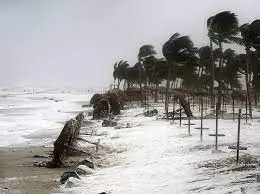Extremely Severe Cyclonic Storm Fani (/ˈfɒniː/)[a] was the worst tropical cyclone to strike the Indian state of Odisha since the 1999 Odisha cyclone. The second named storm and the first severe cyclonic storm of the 2019 North Indian Ocean cyclone season, Fani originated from a tropical depression that formed west of Sumatra in the Indian Ocean on 26 April. Vertical wind shear at first hindered the storm’s development, but conditions became more favorable for Fani on 30 April. Fani rapidly intensified into an extremely severe cyclonic storm and reached its peak intensity on 2 May, with 1-minute sustained winds equivalent to a Category 5 major hurricane. Fani slightly weakened before making its landfall, and its convective structure rapidly degraded thereafter, degenerating into a remnant low on 4 May, and dissipating on the next day. It was succeeded by Cyclone Amphan in 2020 which caused a greater overall damage.
Prior to Fani’s landfall, authorities in India and Bangladesh moved at least a million people each from areas within Fani’s projected path onto higher ground, and into cyclone shelters, which is thought to have reduced the resultant death toll and casualties.[3] Fani killed at least 89 people in eastern India and Bangladesh and caused about US$8.1 billion in damages in both India and Bangladesh, mostly in Odisha, in India.







